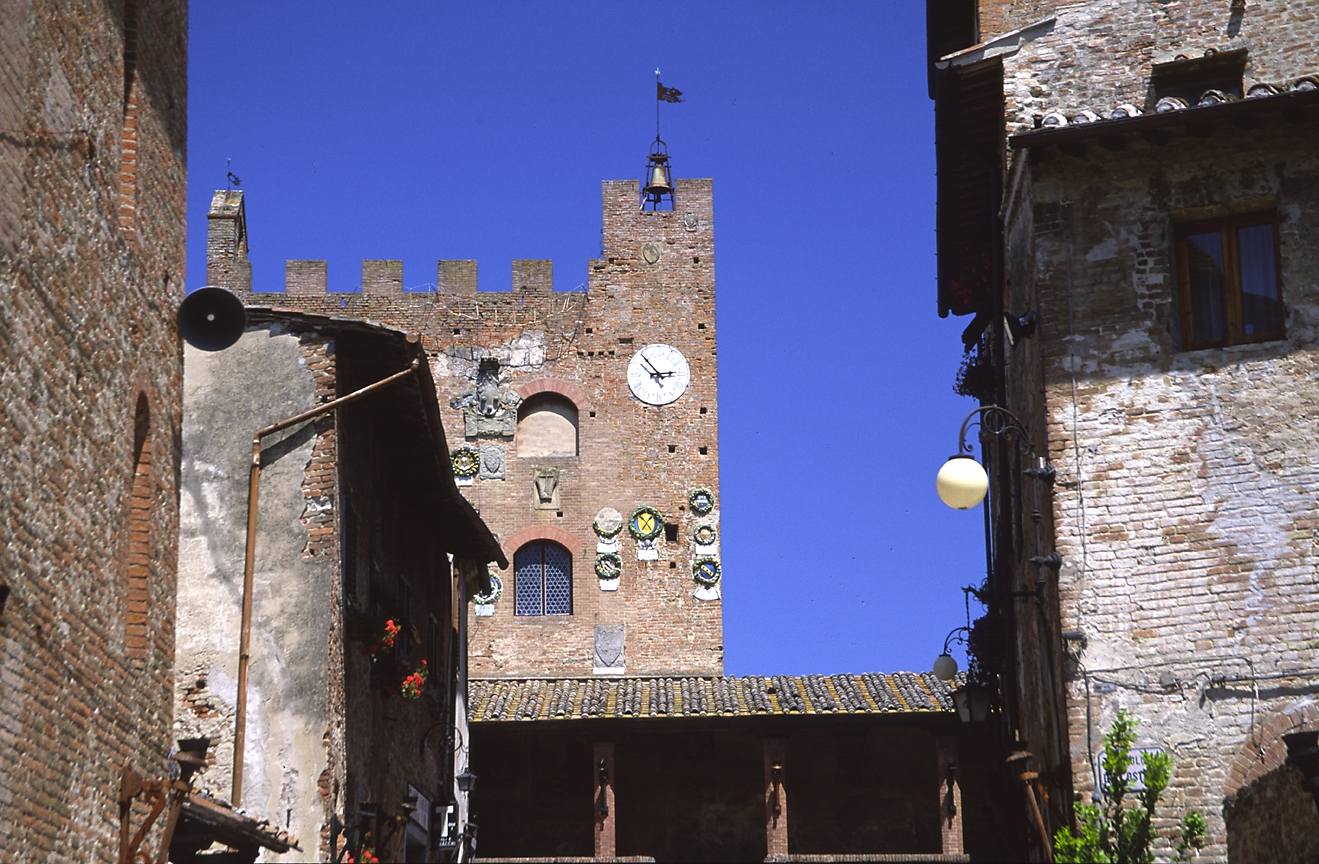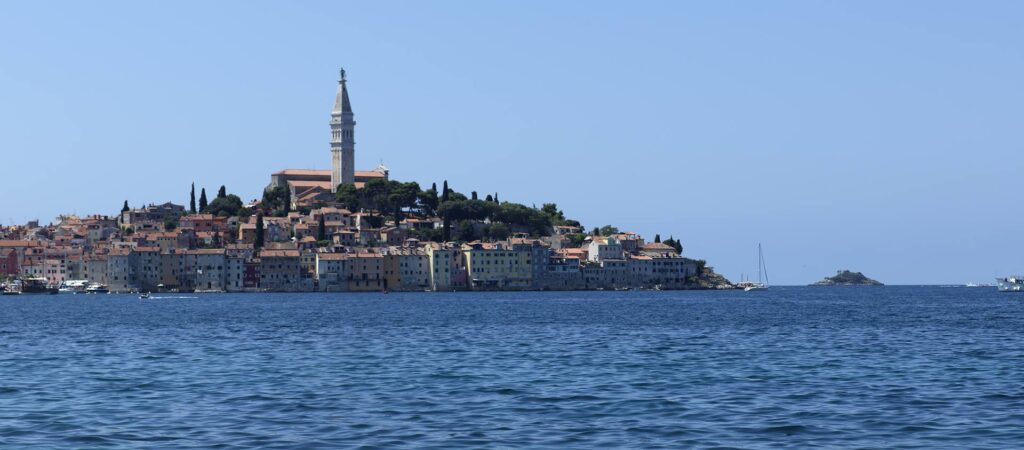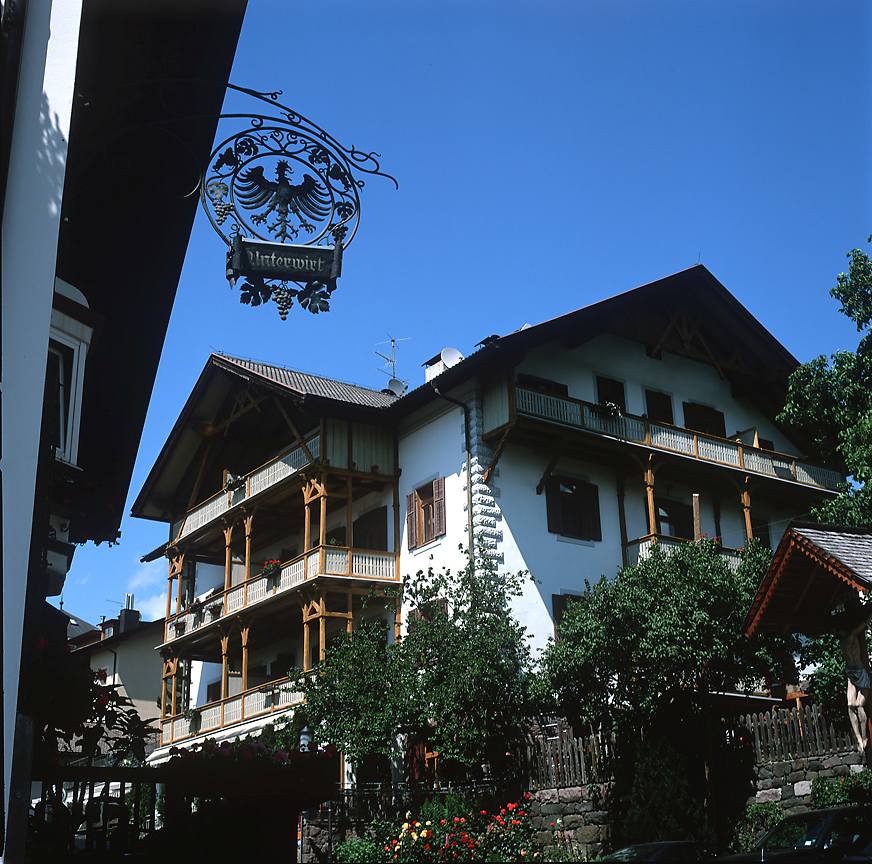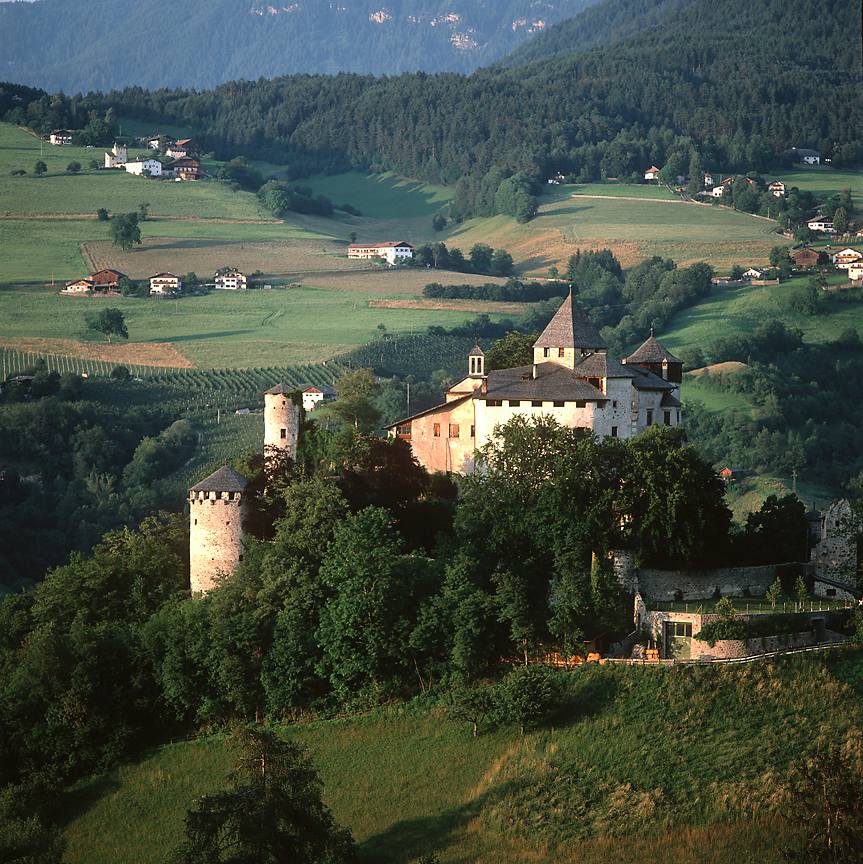In Italy, when you turn on the television you will generally hear someone speaking an elegant language from the 14th Century. I would like to explore how that rather improbable state of affairs might have come about.
We should be in Italy now, but thanks to the pandemic, we cannot be. Instead, it has been a slightly bittersweet experience to have been watching the Giro d’Italia, not on Australian TV with local commentary, but over the Internet with the original Italian commentary. While I’m not particularly interested in bike racing, the scenery is wonderful, and listening to the commentary is good for one’s Italian. Before this I didn’t know that a curva gomito (“elbow curve”) is Italian for “hairpin bend”.
Watching and listening to RAI, the Italian state broadcaster, whether it be a bike race, a quiz show or the evening news, reminds one that RAI still maintains the principle that there is a “standard Italian” pronunciation and grammar, and deliberately models that standard. The Australian and British state broadcasters gave that sort of thing up long ago, and while that doubtless says something about Anglophone societies, I’m more interested in what it tells us about Italy.
Making the Italians
Every Italian knows the quote attributed to the Piedmontese scholar and statesman Massimo d’Azeglio – “L’Italia è fatta. Restano da fare gli Italiani.” (“Italy is made. The Italians remain to be made.” This is sometimes rendered more idiomatically as “We have made Italy. Now we have to make the Italians.”) That was in reference to the fact that unification in 1861 brought together a collection of very diverse populations which had not been under a single government since the fall of the Roman Empire. In fact, in political terms what had actually happened was that those diverse states had been incorporated into the Kingdom of Savoy (Piedmont), one of the less “Italian” of the states of Italy, in the sense that it had historically looked north across the Alps rather than south.
One of the principal ways in which Italian diversity was expressed was linguistic. I have read that at unification, only 2.5% of the population is estimated to have spoken what would become standard Italian, and Italy’s so-called “dialects” would actually have passed most of the tests that academic linguists require of discrete languages. So Italian dialects were not just the same language with different accents and a few funny words, but showed significant divergence – to the point of being mutually unintelligible in some cases.
Identifying and promoting a standard language would therefore have been high on d’Azeglio’s to-do list. There is an old joke among linguists about a language being a dialect with its own army and navy, so one might have expected the Piedmontese to impose their own – except that in Piedmont itself, the elite actually spoke French.
A Medieval Language
Instead, the decision was to adopt “literary Italian” as the national language. What was literary Italian? Well, it is not too broad a statement to say that in the 1860s it was essentially that of the 1300s – which is to say the language of Dante, Petrarch and Boccaccio. That’s pretty remarkable when you think about it – imagine if the English of Dickens was little changed from that of Chaucer.
Dante’s thing – later emulated by Petrarch and Boccaccio – was to write in the Florentine vernacular. I’ll talk a bit later about why that was special, but the effect was to put the Tuscan dialect at the centre of the Italian literary scene.

And so it remained – which is why Lorenzo da Ponte, Mozart’s librettist for Don Giovanni, The Marriage of Figaro and Così fan’ Tutte, wrote Italian in the 1780s that was not significantly different from that written by Dante 480 years earlier, or found on Italian TV now. This despite the fact that da Ponte came from the Veneto and presumably originally spoke that dialect.
Fast-forward to the great “making the Italians” project of the 19th Century, and the decision to adopt literary Tuscan Italian as the official language would have had obvious advantages. It was already written and understood by educated people throughout the new country, which would have made proceedings in the new parliament easier. But in addition, as education became accessible to more of the population it instantly provided a body of national literature which could be taught to youth. And it invoked great Italian names that would stoke national pride.
Of course it would have had the side effect of making the Florentines even more insufferable, but there is always a cost.
There had been a counter-proposal to choose the Roman version of educated Italian that was spoken in the higher levels of the Catholic Church, but apart from annoying the Florentines it would have lacked most of Tuscan’s advantages. Moreover I suspect that the suggestion would not have been helped by the increasingly adamant opposition to Italian unification from Pope Pius IX.
Rinsing in the Arno
New literature was written, and some existing works in regional dialects rewritten, in standard Italian. The novel I Promessi Sposi (The Betrothed) by Alessandro Manzoni was first published in 1825, and remains one of Italy’s favourites which everyone studies at school. Manzoni was a Milanese, and the novel is set on Lake Como, further north in Lombardy. Despite this Manzoni was in favour of adopting literary Tuscan Italian as the national language, and so he rewrote the book twenty years later, replacing the original Lombard idioms with Florentine ones. As he put it, he “rinsed his clothes in the Arno” (the river that flows through Florence).

Despite consensus on a language having been achieved, the original Italian constitution did not explicitly require that there be a single Italian language, and it was not until the Fascist era that a law was passed giving primacy to standard Italian. This is not surprising, as the Fascists were particularly keen on the idea of a single language as a national unifier (or as an instrument for controlling society, if you prefer). Characteristically they overdid it, forcing Italian on non-Italian-speaking minorities such as Slovenes and the German-speaking South Tyrolese. That was a bit rich from the country that invented the term “irredentism” (see below).
The cumulative effect of all this was that by the early 1950s, more and more people (almost 90%) understood standard Italian, although a significant number (over 60%) still spoke their own dialect at home or in the community. Seventy years on, standard Italian has triumphed, and the institution that has been more responsible for this than anything else is the national broadcaster, RAI (compulsory military service was another factor, but only for men). After the war, more and more people got access first to radio and then television, and just as people used to refer to “BBC English”, there was and remains a “RAI Italian”.
Powerful evidence of this change is the experience of members of the Italian diaspora – mostly not highly-educated – who emigrated from Italy to countries like Australia after the war. One hears many reports of people who left Italy as children or young adults speaking only their local dialect, and who returned there in old age to find that they could not understand what was being said around them in the street. I have had a couple of these stories at first hand, including from my elderly barber of a few years ago, a lovely fellow called Franco who came to Australia from Sulmona in Abruzzo in the 1960s.
People value most what they fear to lose, and so nowadays one sees more interest in, and respect for, dialects and regional languages. The attitude of the authorities has gone from intolerance through tolerance to official recognition in the form of bilingual road signs in some areas. Will this be effective? It is increasingly common for younger people to use dialect, if at all, only when speaking to their grandparents’ generation.
How Different are the Italian Dialects?
One of our favourite aids to learning Italian is a TV quiz show called l’Eredità. This screens each evening on RAI 1 for much of the year, and with its genial host and cheesy dancing girls, is hugely popular especially during COVID lockdowns. And from the language student’s point of view, the formulaic nature of quiz shows is quite helpful.
The questions mix popular and “high” culture, – for example one contestant might be asked to identify which hit songs were recorded by which popular artist, while the next is given a list of literary characters and asked whether they are to be found in the pages of Dante or Manzoni. A third might be asked for the past participles of various irregular verbs (we are reassured to find that even Italians don’t always get them right).
A theme to which the program often returns is “dialetti”, in which contestants are asked for the meaning of proverbs and sayings in regional dialects. While the examples are obviously chosen for their difficulty, it is entertaining to see how some nugget of folk wisdom from – say – Calabria will baffle a person from Trentino, and the other way round as well.
When seeing such dialect phrases on the screen, one is struck by how very different they look from standard Italian – not just the vocabulary, but more fundamental aspects of language like syntax, conjugations and phonology. Some of the strangeness can presumably be attributed to the spelling – scholars and enthusiastic nationalists who devise orthographies for minority languages will generally wish to emphasise what distinguishes them from the majority language, rather than what they have in common. But it remains striking that standard Italian looks more like Spanish than it does Neapolitan.
Not only that, but it actually looks more like Latin than it looks like most Italian dialects. A recent (and very funny) Italian film is called Quo Vado, which is both good Italian and good Latin.
When I first noticed this many years ago it seemed perfectly reasonable to me. After all, Italian is derived from vulgate Latin, and is spoken in the same part of the world. But, on reflection, so are all other Italian dialects, and they are separated from Latin by the same amount of time. So why is this? Why is standard Italian so unlike regional dialects, and so similar to Latin?
It would seem that there are a few reasons, the first one being that canonical works of literature slow down the rate of change in the languages in which they are written. If you need examples in English, you have Shakespeare and, more profoundly influential, the King James version of the Bible. And in Italy, the literature that all educated people learned was written in Florentine.
Not only that, but at the time when it was elevated to canonical status by Dante, it seems that Florentine was already a rather old-fashioned Italian dialect, preserving more archaic features than others. In one of those sound shifts so beloved of historical philologists, every version of Italian other than Florentine and Corsican had already undergone some major changes. Oddly enough the result is that today a dialect that is closer than many to standard Italian – Corsican – is spoken in what is now a part of France.
The combined effect of these was that Florentine started out a bit more archaic than other dialects, and then evolved more slowly than they did.
A third reason is the association of Florentine culture with the Renaissance. The rediscovery of antiquity as a source of artistic models would have had the obvious effect of causing scholars to emphasise those elements of language that they believed to represent continuity with antiquity, and to place less emphasis on others. This occurred in all of the main European languages, even those not of Latin origin. An English, Dutch or German scholar looking to dignify their language with Latinisms would face the problem that their language was basically Germanic, and could only look for introduced vocabulary that had, or could be argued to have, Latin or Greek origins. But in Florentine Italian, scholars and enthusiasts had a great deal more Latin-derived material to work with – syntax, verb declensions and most of the vocabulary.
The first institutional attempt to “purify” any European language arose in Florence in 1583, in the form of the Accademia della Crusca, still the notional source of authority on the Italian language . “Crusca” means “bran”, and the idea was that the members – writers, philosophers and other intellectuals – would winnow out the less worthy bits of the language, and keep the better parts. The Accademia was the model for the better-known Académie Française, created in 1635 by Cardinal Richelieu – however the Accademia has managed to do its job with less pomposity and chauvinism than has the Académie.
Postscript: Irredentism, Fascism and minority languages.
When the unified Kingdom of Italy was proclaimed in 1861, substantial chunks of territory with Italian-speaking populations were not yet part of it as they remained under Austrian rule. These were the modern regions of Veneto, Trentino-Alto Adige and Friuli-Venezia Giulia, plus some parts of what are now Slovenia and Croatia such as the Istrian peninsula. They were referred to by Italian nationalists as le terre irredente, or “the unredeemed lands”. The idea that people speaking the same language should have their own country, and that political boundaries should match linguistic ones, thus came to be called “irredentism”. The term came back into vogue for a while in the 1990s, as eastern European countries re-drew their boundaries (or, in the former Yugoslavia, went to war with each other) after the fall of the Soviet Union.

With the defeat of Austria-Hungary in World War 1, Italy made a bid for those territories in the Treaty of Versailles, even the German-speaking South Tyrol. President Woodrow Wilson, whose grasp of the geography of that part of the world seems not to have been very strong, agreed with Italy, and so it came to pass- apart from the bits that went to the newly created state of Yugoslavia. Shortly after that, the Fascists came to power in Italy, and as we have seen, started forcing Italian onto their minority populations. In the South Tyrol, a particularly unpleasant Fascist called Ettore Tolomei drew up a list of measures that included preventing children being given German names, and creating new Italian placenames for towns, mountains and rivers that had never had them. Most of those confected names are still officially gazetted, albeit now alongside the original ones. As I said, it was a bit rich coming from a government that had spent the previous seventy years complaining about the rights of oppressed Italian speakers under foreign rule.
The picture below was taken in the town of Seis in the South Tyrol, and as you can see it doesn’t look very Italian, despite also having the Italian name of Siusi.

This photograph is of Schloss Prösels nearby – again, not a very Italian name, and not a very Italian-looking scene.

The Fascists also relocated some non-Italian groups into monoglot Italian areas. Readers of Eric Newby’s Love and War in the Apennines may recall that this was how his wife-to-be Wanda, a Slovene, came to be living in the middle of Italy.
With the fall of Fascism and the creation of the Italian Republic in 1946, the new constitution actually contained, in its Article 6, recognition of the rights of linguistic minorities. Article 6 was largely ignored for fifty years though, and relief for German and French speakers from oppressive laws only came about as a result of pressure from the Austrian and French governments. Only in the late 1990s did the Italian Parliament actually pass any laws giving practical effect to Article 6, and resentment still persists. I quickly discovered, when visiting the South Tyrol, that attempting to engage the locals in Italian was not a good idea – and as I speak hardly any German, English turned out to be a better choice.
The political fortunes of Fascism had an unlikely effect on the Italian language. The Fascists did not like the (curious, to the ears of English speakers) Italian use of the feminine-gender third person singular pronoun Lei as the polite form of address to people of either sex. They thought it unbecoming for manly chaps such as themselves to call each other, in effect, “she”. So good Fascists started using the second-person plural voi as the polite form, as with the French use of vous and the English you. In other circumstances, that change might have stuck. But after the war there was a general updating of people’s CVs to show that they had never actually been fascists at all, really. So the Lei form suddenly became “correct” again, as it remains.

One Reply to “A Brief Political History of the Italian Language”